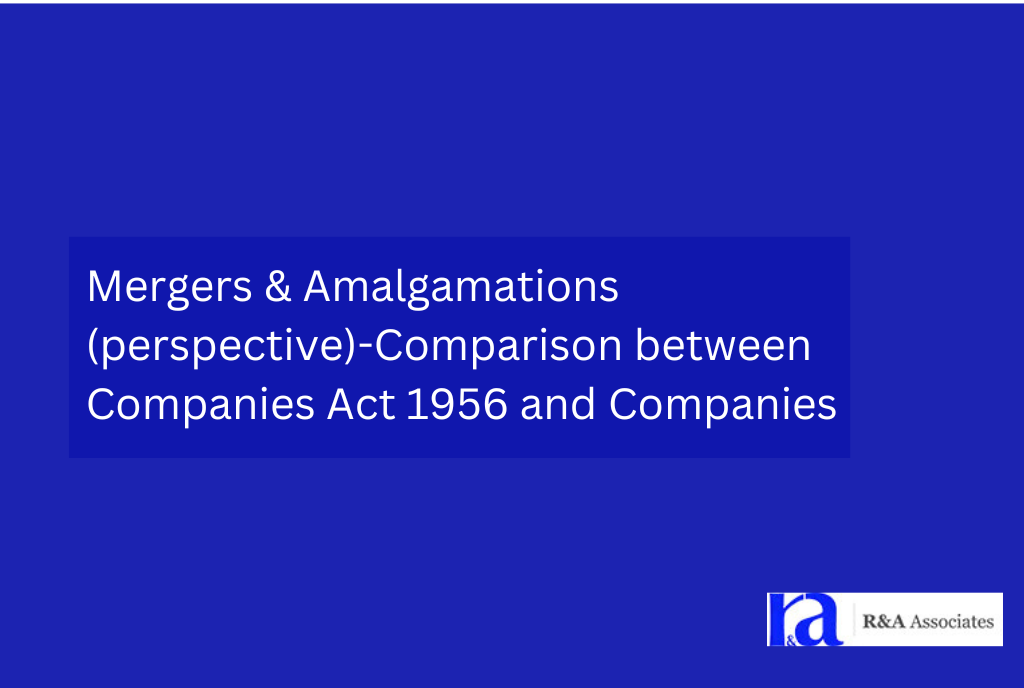| S. No. | Particulars | Companies Act, 2013 | Companies Act, 1956 |
| 1 | Applicability | Section 230 – 240* | Section 390 -396A |
| 2 | Cross Border Mergers | Inbound mergers (Foreign Company merging into Indian Company as well as outbound foreign company mergers (Indian Company merging into foreign Company with RBI approval) are allowed. | Permits only inbound foreign Company merger
(Foreign Company merging into Indian Company) |
| 3 | Fast Track Merger | Fast track merger is merger between two or more small companies, holding company and its wholly owned subsidiary and such other company as may be prescribed.
|
No provisions for exemption from court process for corporate reorganizations like amalgamation, merger etc. |
| 4 | Objection to Scheme of Amalgamation
|
Such scheme can be objected only by shareholders having not less than 10% shareholding or creditors whose debt is not less than 5% of total outstanding debt as per the last audited financial statement | There was no such limit which stated that a person holding even 1% of shareholding in the Company can object the scheme |
| 5 | Meeting of Creditors/Shareholders to approve the Scheme
|
Scheme if approved by 3/4th of creditors (value or class) or members, and if sanctioned by National Company Law Tribunal, the same shall be binding as stated under section 230(6)(1).
The 2013 Act additionally allows the approval of scheme by postal ballot and E-voting |
Scheme if approved by 3/4th value of creditors or members, it will be binding if sanctioned by court as stated under section 391(2), voting in person or a proxy at meeting.
E-Voting was not permitted under 1956 Act. |
| 6 | Merger of a Listed Company into Unlisted Company
|
The Companies Act, 2013 requires that in case of merger between a listed transferor company and an unlisted transferee company, the transferee company would continue to be unlisted until it becomes listed. | No specific provisions governing merger of listed company with unlisted company. |
| 7 | Body of approving Merger | National Company Law Tribunal will deal with matters related to Mergers & Acquisitions. | Scheme of arrangement to be approved by respective High Court which has jurisdiction over Acquirer and Target companies. |
| 8 | Valuation Report
|
It is mandatory that notice of meeting to discuss a scheme must be accompanied by valuation report prepared by an expert. | The 1956 Act does not mandate disclosing the valuation report to the shareholders. Though in practice, valuation reports are included in documents shared with the shareholders and also to the Court as part of the appraisal process of the scheme by the Courts. |
* yet to be notified
